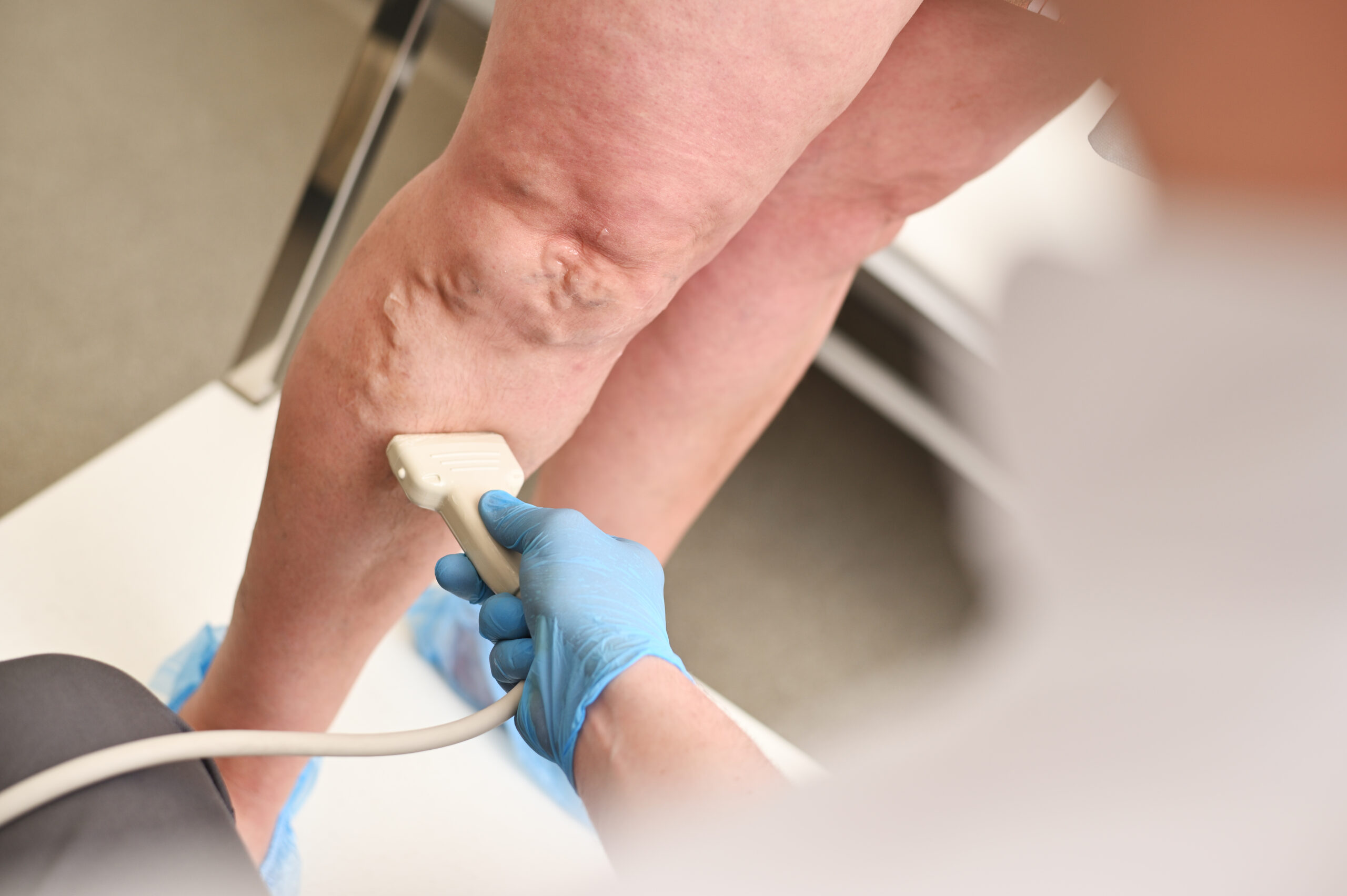Varicose Veins are characterized by enlarged, discolored, twisted like veins in the legs. They are often painful, itchy and may swell up. This vascular condition affects more than 25% of the US population. In minor cases, they may be considered a cosmetic issue; in more severe cases, it may be a deeper venous issue. There are various treatment options available to address the appearance, decrease symptoms, and even remove Varicose Veins.
Varicose veins in the legs form when blood valves malfunction. Circulation is impacted which may cause blood to pool and consequently, veins become twisted-like and enlarged. Additionally, varicose veins can develop due to genetics, age, obesity, pregnancy or extended period of sitting or standing.
Available Treatments:
– Compression therapy is typically recommended as a initial treatment to address varicose veins. This treatment involves socks that are tighter than normal which will provide light pressure to the legs when worn. The pressure promotes blood circulation and alleviate symptoms such as swelling or discomfort.
Lifestyle changes
Minor changes to your daily routine can help reduce varicose veins symptoms. For example, limit extended periods of sitting or standing, exercising or increased mobility, healthy weight management, intermittent leg elevation, and supportive footwear are all beneficial.
-Sclerotherapy is an effective treatment for small to medium sized veins. It is a non surgical minimally invasive procedure and involves injecting solution directly into the affected vein. The solution irritates the barrier of the vein causing them to shrink and, over time, will fade away. This is an outpatient procedure with little to no downtime.
Endovenous Laser Therapy (EVLT) is a minimally invasive procedure that involves using heat from lasers to close off the affected veins. Over time the body will absorb the closed vein and the vein will disappear. The blood from the affected veins is redirected to healthier veins.
Radiofrequency Ablation is an outpatient procedure used to treat larger veins. It is minimally invasive and involves using radiofrequency energy to heat the barrier of the affected vein causing it to close up. The energy is transferred through a small catheter connected to the damaged veins.
Ambulatory phlebectomy, also known as microphlebectomy is a minimally invasive outpatient procedure used to treat larger veins. The procedure involves making small incisions in the skin to remove the affected veins. The patient may be placed under local anesthesia during the procedure.
What treatment is best?
When choosing the best treatment for your veins you should consider the following factors: the size, vein severity, location of the veins, individual health needs and personal preference. A consultation with an experienced vascular team, such as the experts at West Medical, is highly recommended to guide you during your individual vascular care journey.
Varicose veins may be painful and unsightly however, there are a wide range of effective minimally invasive treatments to address this common condition. To learn more about the best treatment to fit your needs and lifestyle, schedule a free consultation at one West Medical’s convenient locations. Our expert vein care team will be happy to assist you.


